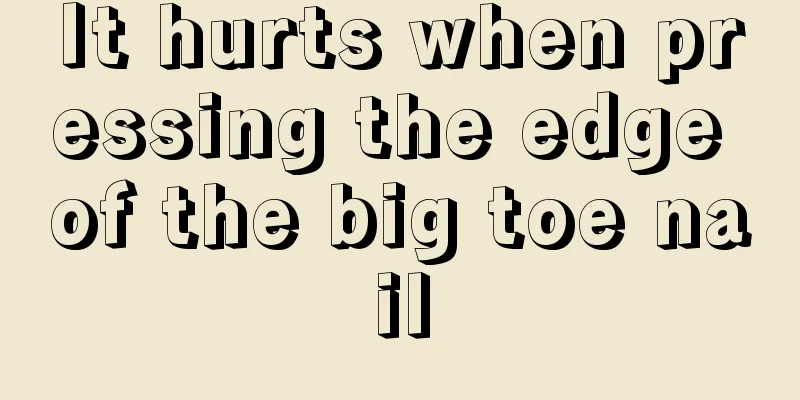How to treat tooth wedge-shaped defects?

|
Teeth are a part that everyone needs to pay great attention to, and the health of teeth is extremely important to people's bodies. Teeth can initially break down food and reduce the digestive burden of the stomach and intestines. Teeth are also an important part of people's image. There are many types of dental diseases. Among them, tooth wedge-shaped defects are relatively rare, and the treatment methods need to be carefully studied. Let's take a look at how to treat tooth wedge-shaped defects? A wedge-shaped defect is a defect caused by the slow consumption of hard tissue in the labial and buccal neck of the tooth. It is named because the defect is often wedge-shaped. Causes 1. Brush your teeth This is the main cause of wedge-shaped defects, which are also called brushing wear. The reasons are: ① People who brush horizontally with force often have typical and severe wedge-shaped defects. ②Does not occur on the lingual surface of the teeth. ③ Labially displaced wedge-shaped defects are often more serious. ④ Wedge-shaped defects in teeth are often accompanied by gingival recession. 2. Structure of the tooth neck The structure of the enamel-cementum junction at the cervical part of the tooth is relatively weak and easily worn away, which is conducive to the occurrence of defects. 3. Effect of acid Acid exudate in the gingival sulcus is associated with the defect. Defects of hard tissue under the gingival margin are sometimes seen clinically. 4. Teeth, lips, cheeks and neck It is the area where bite force stress is concentrated. Long-term chewing force causes tooth tissue fatigue and damage in stress concentration areas. treat 1. Treatment principles (1) Patients with minimal tissue loss and no dentin hypersensitivity do not require special treatment. (2) For those with dentin hypersensitivity, desensitization therapy should be used. (3) For larger defects, filling and restoration can be performed using glass ionomer cement or composite resin. For those with deep holes or sensitive symptoms, padding should be performed before filling. (4) When there is pulp infection or periapical disease, endodontic treatment or root canal treatment can be performed. (5) If the defect has caused a transverse fracture of the tooth, root canal treatment can be performed, followed by a denture or tooth extraction, depending on the condition and conditions. 2. Treatment measures (1) A wedge-shaped defect with minimal loss (shallow) is asymptomatic and does not require treatment. (2) For those with dentin hypersensitivity, desensitization can be achieved through medication. (3) Defects that are too large or too deep can be repaired by filling. If the pulp has been penetrated, endodontic treatment can be performed, followed by defect repair. For tooth fractures, root canal treatment is performed on those with good root surfaces, followed by crowning, post crowning or tooth extraction. (4) Use the correct brushing method (vertical brushing method) and do not use excessive force when brushing to avoid damaging the gums. |
<<: Why does my tooth still hurt after root canal treatment?
>>: How to treat nocturnal bruxism in adults?
Recommend
Sequelae of brain trauma, these must be prevented
Brain trauma seems to be a very normal disease, b...
How much does teratoma surgery cost
How much does teratoma surgery cost? Many women a...
What is the method of memory concentration training
We all know that as we age, our memory will gradu...
How to relieve the embarrassment of having to take off clothes for examination
In the practice of imaging examinations, when it ...
What to use after using toner
Toner is a commonly used product for women when a...
Do you know the dangers of high blood lipids in young people?
High blood lipids are mostly a disease that occur...
What are the symptoms of prostate cancer in men? Introduction to 3 symptoms of prostate cancer in men
No matter what disease you have, only by early de...
How much does chemotherapy for colon cancer cost
How much does chemotherapy for colon cancer cost?...
Women with long-term constipation are more likely to develop breast cancer
The cause of breast cancer is still unclear. It i...
What are the treatments for breast cancer? Four common misunderstandings about breast cancer treatment
Breast cancer is the malignant tumor with the hig...
How to treat dizziness caused by getting up too quickly
Nowadays, many people have their daytime time occ...
Colon cancer can be treated in a variety of ways
Colon cancer can be treated in many ways, and the...
What should I do if I suddenly have severe stomach pain?
Eating is an indispensable daily activity, so the...
How long can eggs be kept in rice
In the past, when life was relatively scarce and ...
Smoking is a risk factor for pancreatic cancer
There are many factors that induce pancreatic can...









